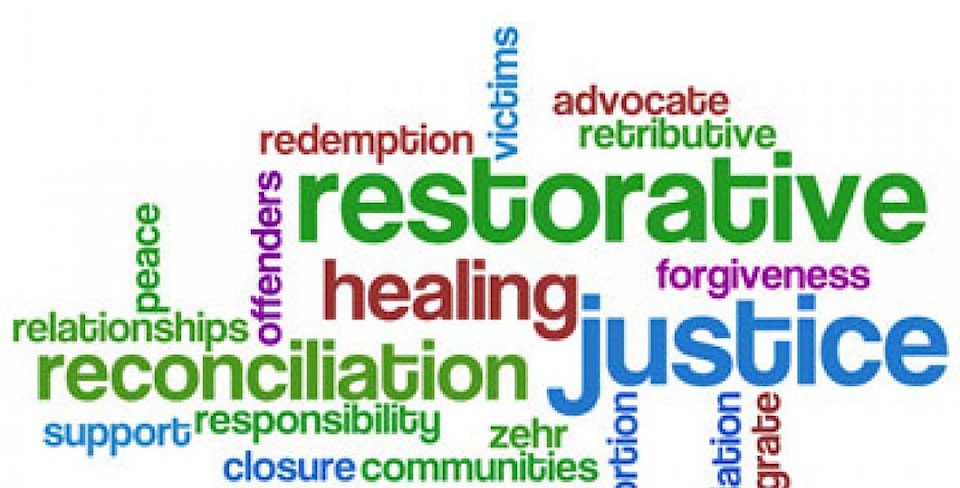Bill Veenstra
Last week was Restorative Justice Week in BC, across Canada and around the world.
Restorative Justice Week was an opportunity to learn how the values and principles of restorative justice apply to differing situations in the criminal justice system and in everyday life within the Cranbrook & District Restorative Justice Society.
Restorative justice is a unique approach to addressing crime and those affected — the victim, the offender and the community.
The approach acknowledges that when a crime occurs, it creates obligations to make things right. It seeks the input of victims, community and offenders in responding to the harm.
If all parties are willing, a facilitated dialogue process may occur whereby victims are invited to express the impact and their needs, offenders are invited to take responsibility and make amends, and communities are involved in supporting the process and individuals within it.
Indigenous communities have approached justice in this relationship-based manner since time immemorial, and current models in the indigenous context may include healing peacemaking circles.
Those brought together in this process can benefit from its emphasis on meeting needs and finding a healing path forward. Many victims report satisfaction with the process and its preparation. Often, their outstanding questions about the crime are answered and their sense of wellbeing and safety can be strengthened or restored.
The offender’s opportunity to hear the impact of the crime and experience empathy can result in accountability and reparation that is more meaningful than through the mainstream criminal justice process.
Research indicates that restorative justice leads to a higher degree of satisfaction with the justice system, lowered recidivism rates and an increase in public confidence.
Not only can restorative justice have positive results for all involved, it can also importantly relieve the burden on the justice system created in part by the traditional administering of justice. A robust and comprehensive restorative justice program has potentially significant cost savings for the judicial and corrections systems. Nonetheless, these programs remain on the fringes of the criminal justice system.
The theme chosen for Restorative Justice Week is “Inspiring Innovation”. Such an inspiration is the intention of the Canadian Bar Association, BC Branch (CBABC) with its An Agenda for Justice, a platform paper that includes recommended government action on restorative justice in BC.
Partnerships are fundamental to the success of restorative justice. CBABC encourages government to work with indigenous, spiritual and community leaders, victim services, the police, and senior members of the judiciary to use this process to strengthen the community. British Columbians will all benefit from funding that supports consistent referrals of appropriate cases for restorative justice initiatives.
Attention to this issue and implementation of the recommended changes with increased funding can create meaningful and lasting change for organizations such as Cranbrook & District Restorative Justice Society.
The CBABC calls on the provincial government to take these steps to make restorative justice a key part of our criminal justice system.
Bill Veenstra is the president of the Canadian Bar Association, BC Branch for 2017/2018.
